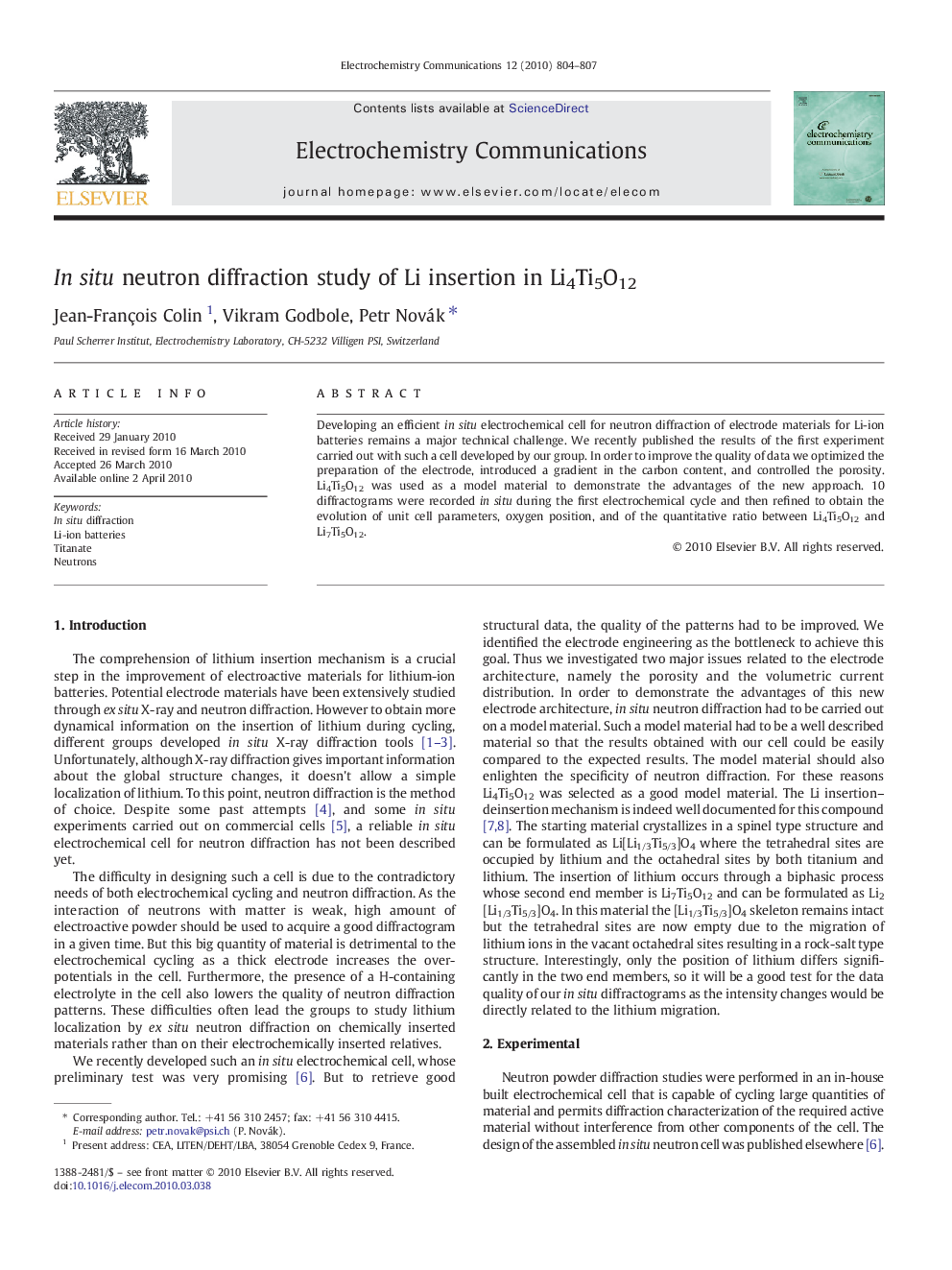| Article ID | Journal | Published Year | Pages | File Type |
|---|---|---|---|---|
| 180165 | Electrochemistry Communications | 2010 | 4 Pages |
Abstract
Developing an efficient in situ electrochemical cell for neutron diffraction of electrode materials for Li-ion batteries remains a major technical challenge. We recently published the results of the first experiment carried out with such a cell developed by our group. In order to improve the quality of data we optimized the preparation of the electrode, introduced a gradient in the carbon content, and controlled the porosity. Li4Ti5O12 was used as a model material to demonstrate the advantages of the new approach. 10 diffractograms were recorded in situ during the first electrochemical cycle and then refined to obtain the evolution of unit cell parameters, oxygen position, and of the quantitative ratio between Li4Ti5O12 and Li7Ti5O12.
Related Topics
Physical Sciences and Engineering
Chemical Engineering
Chemical Engineering (General)
Authors
Jean-François Colin, Vikram Godbole, Petr Novák,
